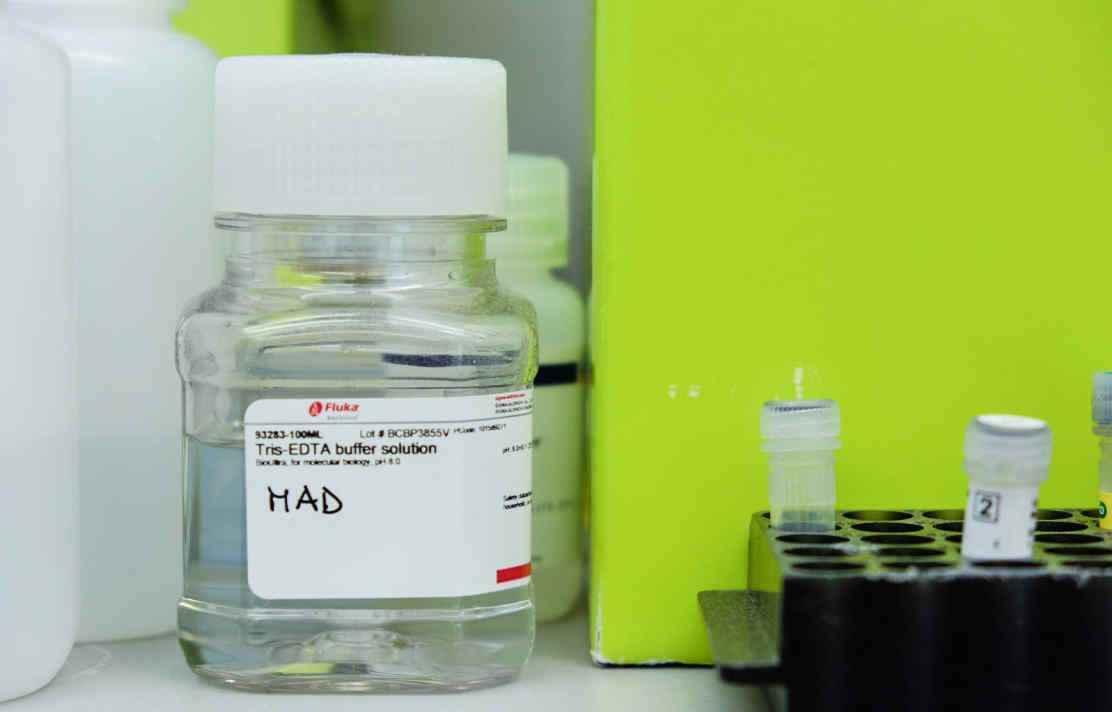Applications of hair analysis
- Establishing a history of chronic drug use
- Revealing drug abstinence
- Demonstrating tolerance or lack of it
- Compliance with medication
- Deaths due to long-term cocaine use and its role in depression and suicide, sudden unexplained death and excited delirium
- Drug investigations to show whether or not an individual was a drug user
Hair is a unique specimen. It is the only sample which can provide a reliable drug history for the weeks and months prior to sample collection. The innovative method used at the Toxicology Unit was developed by Dr Rosa Cordero, a leading expert in the field of hair analysis and interpretation of the results. Analysis of hair is now a well-established technique. It is being used increasingly in crime investigation and Coroner's toxicology.
Method
- Uses Gas Chromatography-Mass Spectrometry (the gold-standard identification technique in the forensic profession)
- Identifies and quantitates specific drugs of abuse
- The quantitative results of 6-monoacetylmorphine (6-MAM) and morphine can be used to estimate heroin use as low or occasional use, regular or habitual use and heavy or excessive drug use
- Simultaneously detects other drugs including antipsychotics, antidepressants, anticonvulsants and analgesics
- The reported results are of a standard suitable for use in court
The method has been fully validated and published in a peer-reviewed journal:
Cordero R, Paterson S. Simultaneous quantification of opiates, amphetamines, cocaine and metabolites and diazepam and metabolite in a single hair sample using GC-MS. Journal of Chromatography B, 2007; 850: 423-431.
Provides evidence for long-term drug use in cases including
- Establishing a history of chronic drug use
- Revealing drug abstinence
- Demonstrating tolerance or lack of it
- Compliance with medication
- Deaths due to long-term cocaine use and its role in depression and suicide, sudden unexplained death and excited delirium
- Drug investigations: to show whether or not an individual was a drug user
Extra information
Targeted drugs
Amphetamines
- Amphetamine
- Methamphetamine
- MDMA (known as ecstasy)
- MDMA metabolite: MDA
(There is no indicative metabolite for amphetamine, but methamphetamine is metabolised to amphetamine).
Cocaine group (cocainics)
- Cocaine
- Cocaine metabolites:Benzoylecgonine (BE),EME (EME) and Cocaethylene
(Cocaethylene is formed when cocaine is co-ingested with ethanol).
Opioids
- Morphine
- Codeine
- Dihydrocodeine (DHC)
- Methadone (a synthetic opioid).
- Methadone metabolites: EDDP , DDP and EMDP .
Heroin determination
- Diamorphine (known as heroin)
- Heroin metabolites: 6-MAM * and morphine
- Papaverine **
*6-MAM is the definitive marker for heroin use, but cannot distinguish between licit (clinical grade) and illicit heroin.
**Papaverine is a marker for street heroin.
Benzodiazepines
- Diazepam
- Diazepam metabolites: Nordiazepam , Oxazepam and Temazepam
Other drugs detected (parent drug and some metabolites detected)
Antidepressants
- Amitriptyline
- Citalopram
- Dothiepin
- Fluoxetine
- Mirtazapine
- Paroxetine
- Sertraline
- Venlafaxine
Antipsychotics
- Clozapine
- Levomepromazine
- Olanzapine
- Quetiapine
- Thioridazine
Anticonvulsants
- Carbamazepine
- Lamotrigine
- Phenytoin
Analgesics
- Paracetamol
- Propoxyphene
- Tramadol
Others
- Cannabinol - cannabis component
- Cyclizine - antihistamine
- Diltiazem - antianginal
- Diphenhydramine - antihistamine
- Ketamine - anaesthetic
- Lignocaine - local anaesthetic
- Nevirapine - antiviral
- Orphenadrine - antimuscarinic

Important links
General enquiries
Toxicology Unit
Imperial College London
Charing Cross Hospital Campus
St. Dunstan’s Road
London W6 8RP
+44 (0)20 3311 7108
s.paterson@imperial.ac.uk